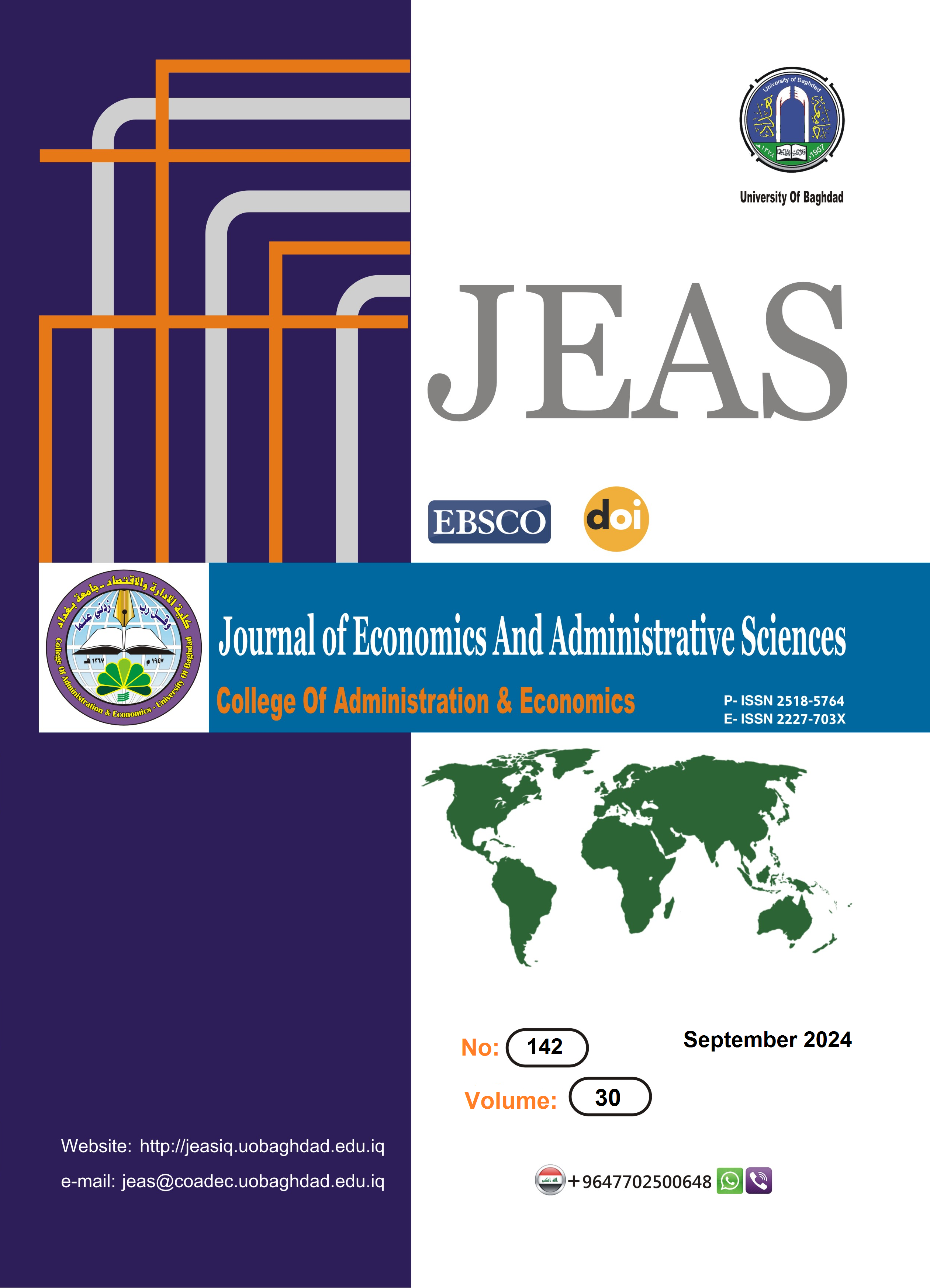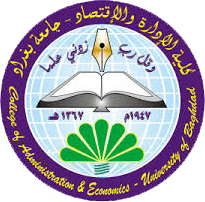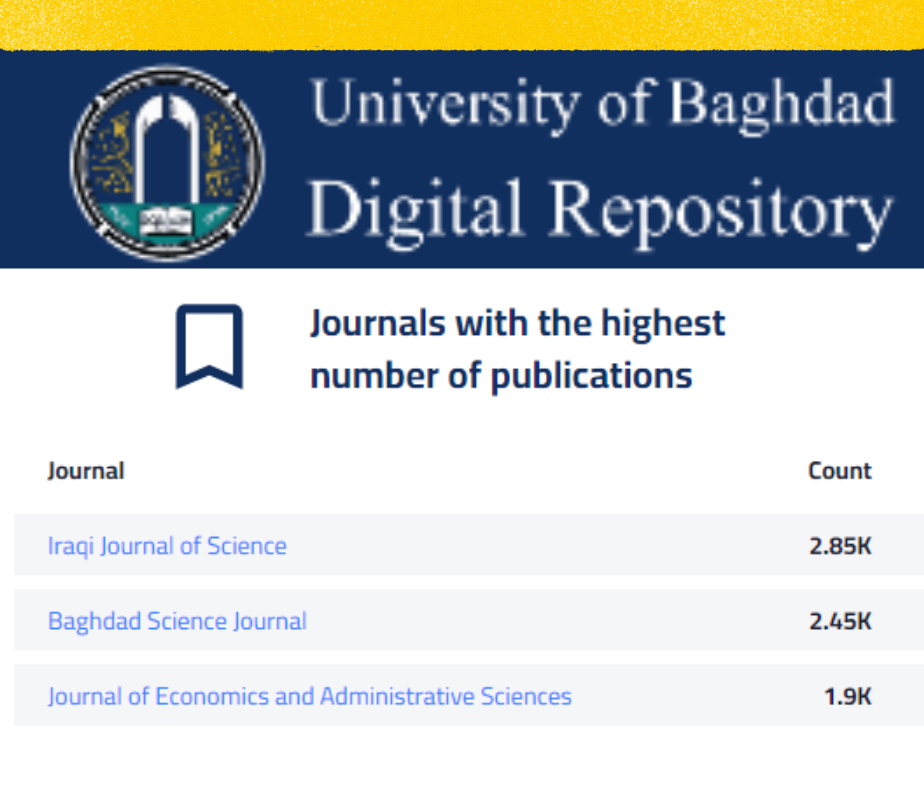The Role of Artificial Intelligence Techniques in Enhancing Project Completion Speed: A Study on Using LSTM Networks for Predicting Delay Times
DOI:
https://doi.org/10.33095/n7rfbg91Keywords:
: Artificial Intelligence (AI), Machine Learning (ML), Deep Learning (DL), Artificial Neural Networks (ANN), LSTM Networks, Project Management (PM), Delay Times (DT).Abstract
This study aimed to investigate mechanisms for enhancing project completion speed through the application of artificial intelligence techniques. The study adopted the approach of "Using LSTM Networks for Predicting Project Delay Times," and the researchers utilized data from 3530 residential units for training, testing, and prediction. Selecting project delay times as a focus was driven by their significant impact on vital project completion. The research problem centers around the main question, "Can LSTM networks be successfully used to predict project delay times?" The significance of the study lies in utilizing Long Short-Term Memory (LSTM) neural network techniques to improve the prediction of project delay times, thereby enhancing project planning and management, reducing delays, and increasing efficiency in execution. Among the key findings, it was revealed that LSTM networks can effectively enhance the prediction of construction project delay times, exhibiting high accuracy and retrieval rates. Introducing this advanced technology to project management can lead to improved scheduling, planning, and reduced delays, ultimately contributing to enhanced work efficiency, productivity, and more accurate strategic decision-making.
Research Type: Research Paper.
Downloads
References
Conclusions :
Based on the achieved results, the researchers arrived at the following conclusions:
The potential use of artificial intelligence (neural networks) in project management aims to expedite project completion.
This study demonstrated that LSTM networks performed exceptionally well in predicting construction project delays based on planned features, achieving an accuracy of 89% and a recall of 93%. This underscores their effectiveness.
The main objectives of evaluating the LSTM model were successfully achieved.
Predicting delay times enables organizations, engineers, and contractors to leverage these techniques for improved project planning and more efficient schedule management.
Employing advanced technology like neural networks enables the early anticipation of potential issues and the implementation of strategies to mitigate their impact on schedules.
The use of artificial intelligence in project management is poised to enhance project team effectiveness.
Artificial intelligence contributes to forming insights about the environment and making informed decisions.
Applications of artificial intelligence are spreading across various fields, including project management.
Artificial intelligence in project management supports numerous initiatives and aids in managing diverse projects.
Project managers benefit from artificial intelligence by streamlining daily tasks and increasing productivity.
Authors Declaration:
Conflicts of Interest: None
-We Hereby Confirm That All The Figures and Tables In The Manuscript Are Mine and Ours. Besides, The Figures and Images, Which are Not Mine, Have Been Permitted Republication and Attached to The Manuscript.
- Ethical Clearance: The Research Was Approved By The Local Ethical Committee in The University.
References:
Abdelaziz, A., Altartoori, H. and Sabbagh, A., (2019). "Artificial Intelligence In service sector". s.l.: academia.edu.
Abulawi, S., (2022). "An Introduction to Industrial Project Management". Amman, Jordan: Al-Rusayfah Comprehensive Vocational Secondary School for Boys.
Ahmad, H. M., (2018). "Project Management". Damascus: Syrian Private University Publications.
Al Qady, M. and Kandil, A., (2010). "Concept relation extraction from construction documents using natural language processing". Journal of Construction Engineering and Management, Vol.136, No. 3, p. 294–302.
Al-Afandi, A. T. A., (2019). "The Availability of Requirements for Project Management Quality System (ISO 10006:2017): A Case Study in Building Engineering Company for Contracting in Mosul". Tanmiyat Al-Rafidain, Vol. 37, pp. 201 - 221.
Al-Azam, N. M., (2021). "The Role of Artificial Intelligence in Enhancing the Efficiency of Administrative Systems for Human Resource Management at Tabuk University". Educational Journal of the College of Education at Sohag University, pp. 468 - 494.
Al-Ilm, H., (2018). "Project Management within the Requirements of Sustainable Development: Towards a Sustainable Approach for Project Management". Economic Studies, pp. 9 - 26.
Al-Khatib, M. Y. R., (2018). "The Application of Construction Companies in the Field of Construction Projects to the Management by Objectives Approach and Its Impact on Project Performance". Unpublished Master's Thesis submitted to the College of Business Administration, Islamic University.
Al-Rawi, S. Y. and AL-sarraf, S. N. H., (2020). "Development of human resources and their role in achieving artificial intelligence A survey of the views of a sample of workers in the cement plant". Journal of Economics and Administrative Sciences, Vol. 26, No. 122, pp. 185 - 204.
Al-Samarrai, S. H. and Delli, A. A., (2016). "Project Management Success in Light of the Characteristics of the Learning Organization: A Field Study of the Views of a Sample of Employees at the General Authority for Roads and Bridg". Journal of Economic and Administrative Sciences, Vol. 88, pp. 131 - 157.
Alzubaidi, L. Zhang, J., Humaidi, A. J., Al-Dujaili, A., Duan, Y., Al-Shamma, O., Santamaria, J., Fadhel, M. A., Al-Amidie, M., Farhan, L., (2021). "Review of deep learning: concepts, CNN architectures, challenges, applications, future directions". Big Data, Vol. 8, No. 53, pp. 2 - 74.
Arup, (2018). "Future of Project Management". London: ARUP.
Ashour, M. A. H., (2022). "Optimized Artificial Neural network models to time series". Baghdad Science Journal, Vol. 19, No. 4, pp. 899 - 904.
Assaf, S. and Al-Hejji, S., (2006). "Causes of delay in large construction projects". International Journal of Project Management, Vol. 24, No. 4, pp. 349 - 357.
Association for Project Management APM, (2020). "APM Body of Knowledge". UK: Association for Project Management APM.
Bloch, T. and Sacks, R., (2018). "Comparing machine learning and rule-based inferencing for semantic enrichment of BIM models". Automation in Construction, Vol. 91, p. 256– 272.
Borrmann, A. C., Treeck, v. and Rank, E., (2006). "Towards a 3D spatial query language for building information models". Proc. of the Joint Int Conf. for Computing and Decision Making in Civil and Building Engineering. ISCCBE.
Boussabaine, A. H., Elhag, T. M. and Tah, Y. A., (1999). "Application of artificial neural network technique to forecast construction duration for public projects". Proc. Inst. Civ. Eng. Constr. Manage. Econ., Vol. 17, No. 2, p. 121–132.
Chen, A., Fu, A., Zheng, X. and Lu, G., (2022). "An efficient network behavior anomaly detection using a hybrid DBN-LSTM network". Computers and Security, Vol.114, p. 102600.
Cheng, M.-Y., Chang, Y.-H. and Korir, D., (2019). "Novel Approach to Estimating Schedule to Completion in Construction Projects Using Sequence and Nonsequence Learning". Journal of Construction Engineering and Management, Vol.145, No. 11, p. 04019072.
Dong, J., Chen, Y. & Guan, G., (2020). "Cost Index Predictions for Construction Engineering Based on LSTM Neural Networks". Advances in Civil Engineering, Vol. 2020, p. 14.
El Khatib, M., Alabdooli, K., AlKaabi, A. and Al Harmoodi, S., (2020). "Sustainable Project Management: Trends and Alignment". Theoretical Economics Letters, Vol.10, pp. 1276 - 1291.
Elrajoubi, S., (2019). "Artificial Intelligence in Project Management". Leadership Innovation Growth Success, pp. 2 - 22.
Fridgeirsson, T. V., Ingason, H. T., Jonasson, H. and Jonsdottir, H., (2021). "An Authoritative Study on the Near Future Effect of Artificial Intelligence on Project Management Knowledge Areas". Sustainability.
Gwet, K. L., (2001). "Handbook of Inter-Rater Reliability: The Definitive Guide to Measuring the Extent of Agreement Among Raters". s.l.: Advanced Analytics, LLC.
Halim, Z., Shuhidan, S. M. and Sanusi, Z. M., (2021). "Corporation financial distress prediction with deep learning: analysis of public listed companies in Malaysia". Business Process Management Journal, Vol.27, No.4, pp. 1163-1178.
He, Y. and Chen, Q., (2023). "Construction and Application of LSTM-Based Prediction Model for Tunnel Surrounding Rock Deformation". Sustainability, pp. 2 - 12.
Ilwani, M., Nassreddine, G. and Younis, (2023). "Machine Learning Application on Employee Promotion". Mesopotamian journal of Computer Science, Vol.1, pp. 106 - 120.
International Finance Corporation IFC, (2021). "Artificial Intelligence in Emerging Markets: Opportunities, Trends and Emerging Business Models". Publications of the World Bank Group, Vol.1.
Jang, Y., Cho, Y. K. and Ahn, Y., (2019). Business Failure Prediction with LSTM RNN in the Construction Industry. International Conference on Computing in Civil Engineering.
Jariwala, N., Putta, C. L, Gatade, K., Umarji, M., Rahman, S. N., Pawde, D. M., Sree, A., Kamble, A. S., Goswami, A., Chakraborty, P. Shunmugaperumal, T., (2023). "Intriguing of pharmaceutical product development processes with the help of artificial intelligence and deep/machine learning or artificial neural network". Journal of Drug Delivery Science and Technology, Vol.87.
Kalogirou, S. A. and Bojic, M., (2000). "Artificial neural networks for the prediction of the energy consumption of a passive solar building". Energy, Vol. 25, No.5, pp. 479 - 491.
Kebro, R. Y., (2017). "An Introduction to Project Management: Methodology, Skills, Execution". Baghdad, Iraq: Nuna Library for Printing and Reproduction.
Lahlah, M., (2020). "Introduction to Artificial Intelligence and Machine Learning". s.l.: Hsoub Academy and Company.
Liao, X. and Chen, X., (2021). "Construction of Prediction Model for Multi-Feature Fusion Time Sequence Data of Internet of Things Under VR and LSTM". IEEE Access, Vol. 9, pp. 153027-153036.
Li, Z., Liu F., Yang, W., Peng, S., Zhou, J., (2022). "A Survey of Convolutional Neural Networks: Analysis, Applications, and Prospects". In IEEE Transactions on Neural Networks and Learning Systems, Vol. 33, No. 12, pp. 6999-7019.
Lomakin, N. I., Popov, I. A., Shohneh, A. B., Maramygin, M. C., Gorbunova A. B., (2020). "AI-System of Stock Exchange Trading Robot for Financial Risk Hedging". Advances in Economics, Business and Management Research, Vol. 128, pp. 3273-3282.
Mahdi, W. S. and ALmohana, F. A. M., (2022). "A Comparison of a Radial Basis Function Neural Network with other Methods for Estimating Missing Values in Univariate Time Series". Journal of Economics and Administrative Sciences, Vol. 28, No. 134, pp. 134 - 146.
Moreno, S. R., Gallego, A. J. and Camacho, E. F., (2023). "Artificial neural network-based fault detection and isolation in a parabolic-trough solar plant with defocusing strategy". Solar Energy, pp. 1 - 9.
Musa, A. and Bilal, A. H., (2019). "Artificial Intelligence: A Revolution in Era Technologies". Cairo: Egyptian: Book House - Arab Group for Training and Publishing.
Mustafa, A. L., (2022). "Applying Artificial Intelligence Tools with BIM Technology in Project Management". Unpublished Master's Thesis, Syrian Virtual University, Damascus.
Najm, N. A., (2013). "An Introduction to Project Management". Amman, Jordan: Al-Waraq Publishing and Distribution Company.
Nazim, E. A., (2009). "Using Artificial Neural Network Models for Forecasting and Comparison". Journal of Economics and Administrative Sciences, pp. 201 - 215.
Odewahn, S. C., Stockwell, E. B., Pennington, R. L., Humphreys, R. M., Zumach, W. A., (1992). "Automated Star/Galaxy Discrimination with Neural Networks". The Astronomical Journal, Vol. 103, pp. 318 - 331.
Pan, S., Zhu, C. and Zhao, X., (2022). "A deep Siamese Neural Network Improves Metagenome-Assembled Genomes in Microbiome Datasets Across Different Environments". Nat Commun, Vol.13, p. 2326.
Pater, I. d. and Mitici, M., (2023). "A mathematical framework for improved weight initialization of neural networks using Lagrange multipliers". Neural Networks.
Powers, D. M. W., (2011). "Evaluation: From Precision, Recall and F-Measure to ROC, Informedness, Markedness and Correlation". Journal of Machine Learning Technologies, Vol. 2, No.1, pp. 37-63.
Qais, M., (2020). "Fundamentals in Engineering Project Management". Malaysia: A-Reed Scholars and Experts Platform.
Qamora, S. S., Muhammad, B. and Karo, H., (2018). "Artificial Intelligence: Between Reality and Expectations - A Technical and Field Study". Algiers, Algeria, International Conference on Artificial Intelligence.
Ramou, M. W., (2019). "Mining Accounting Data Using Neural Networks (Case Study)". Journal of Economics and Administrative Sciences, Vol. 111, No. 25, pp. 531 - 549.
Sambasivan, M. and Soon, Y., (2007). "Causes and effects of delays in Malaysian construction industry". International Journal of Project Management, Vol. 25, No. 5, pp. 517 - 526.
Sejera, S. G. and Bocarnea, M., (2022). "The Nature of Leadership in Artificial Intelligence Environments: Reconceptualizing Human and Machine Collaboration". Revista de Management Comparat International, Vol. 2, pp. 264-283.
Sezer, O. B., Gudelek, M. U. and Ozbayoglu, A. M., (2020). "Financial time series forecasting with deep learning: A systematic literature review: 2005 – 2019". Applied Soft Computing, Vol. 90, p. 106181.
Tah, J., Carr, V. and Howes, D., (1999). "Information modelling for case-based construction planning of highway bridge projects". Adv. Eng. Inform, Vol.13, No. 2, p. 95–103.
Tyralis, H. and Papacharalampous, G., (2022). "A review of probabilistic forecasting and prediction with machine learning". arXiv, pp. 1 - 83.
UNESCO, (2018). "Artificial Intelligence: Promises and Threats". Paris, France: United Nations Educational, Scientific and Cultural Organization (UNESCO).
Vella, M., (2020). "Artificial Intelligence the Future of Humankind". TIME and Fortune.
Visa, S., Ramsay, B., Ralescu, A. and Knaap, E. v. d., (2011). "Confusion Matrix-based Feature Selection". Proceedings of the 22nd Midwest Artificial Intelligence and Cognitive Science Conference.
Whitby, B., (2008). "Artificial intelligence". Cairo, Egypt: Dar Al Farouk for Cultural Investments.
Published
Issue
Section
License
Copyright (c) 2024 Journal of Economics and Administrative Sciences

This work is licensed under a Creative Commons Attribution-NonCommercial-NoDerivatives 4.0 International License.
Articles submitted to the journal should not have been published before in their current or substantially similar form, or be under consideration for publication with another journal. Please see JEAS originality guidelines for details. Use this in conjunction with the points below about references, before submission i.e. always attribute clearly using either indented text or quote marks as well as making use of the preferred Harvard style of formatting. Authors submitting articles for publication warrant that the work is not an infringement of any existing copyright and will indemnify the publisher against any breach of such warranty. For ease of dissemination and to ensure proper policing of use, papers and contributions become the legal copyright of the publisher unless otherwise agreed.
The editor may make use of Turnitin software for checking the originality of submissions received.













 How to use the OJS system
How to use the OJS system 










